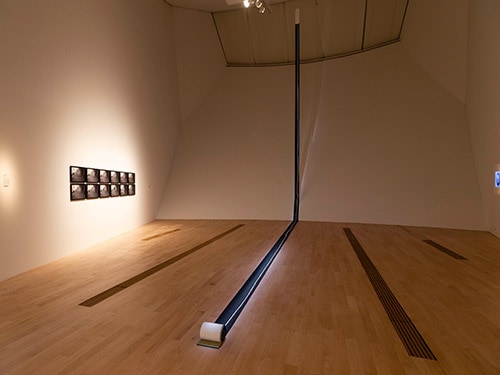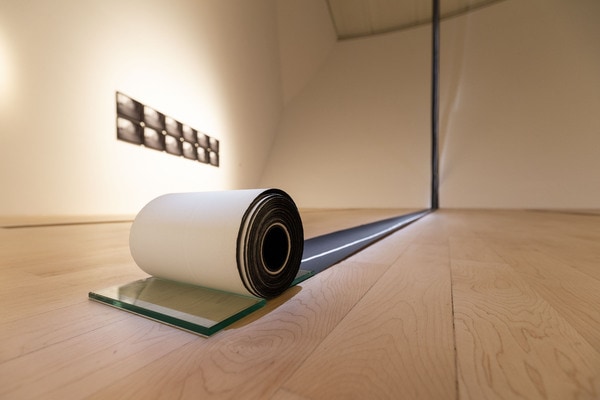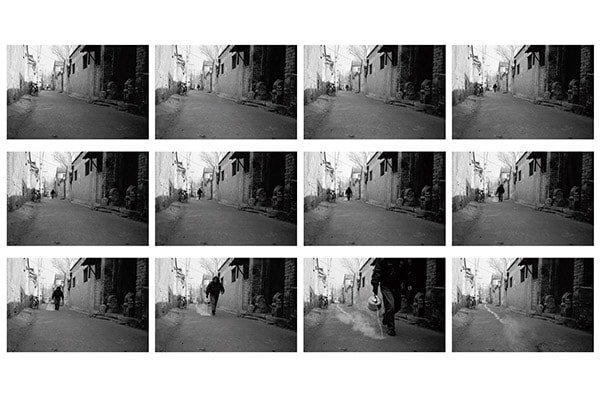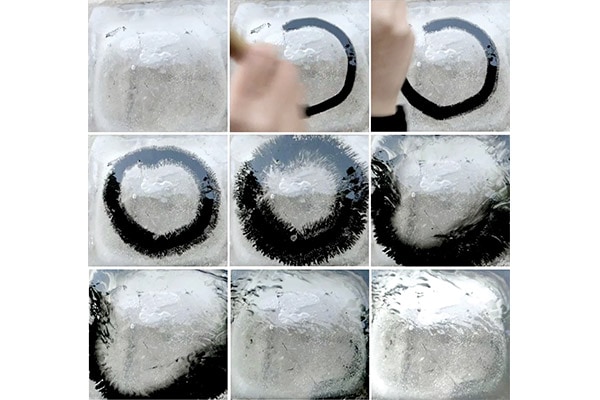

Absence and Endlessness


In Asia, Minimalism as an artistic style can be traced back hundreds of years before it came to prominence in the West. At its root is an ancient Sanskrit text known as the Rig Veda. Parts of this text reference abstract concept Absence and Endlessness s such as nothingness, endlessness and the Void – ideas that have fascinated and challenged artists and scientists for centuries.
Eastern philosophies, particularly Zen Buddhism, were brought to greater attention in the West in the early 20th century, partly through the teaching of Japanese scholar, D.T. Suzuki. These ideas fascinated many of the artists who would go on to become important figures in Minimalism and in art history. Notions of spirituality, temporality and the cycles of life continue to underpin the work of many contemporary Asian artists today, including those associated with Chinese Maximalism.

+40m by Tan Ping (2012)
Woodblock print on paper, 20 x 4000 cm
This 40m long print of a line by Chinese artist Tan Ping acts as a visual and conceptual centerpiece of the Minimalism exhibition at ArtScience Museum. The line was carved into a block of wood in one continuous gesture by the artist over a period of six hours. While one end of the line can be seen the other cannot, suggesting both endlessness and formlessness. The work epitomises Minimalist aesthetics, but also carries with it an incredible emotional power, rooted in the spiritual approach of Chinese Maximalism.
Whilst creating the line, Tan was fully immersed in the carving process and wrote that “all of my energy, experience, my understanding of art, and my internal struggles, all are sealed by the pivotal moment the knife collides with the panel”.


A Pot of Boiling Water by Song Dong (1995)
12 parts, 33.3 × 50 cm (each)
Chinese contemporary artist, Song Dong creates performances, sculptures and installations that reflect on notions of impermanence and transience. The series of black and white images on view are documentation of a live action. They show the artist walking along a Beijing alleyway while pouring boiling water from a large kettle. The poured water marks a line on the ground, while the steam rising from it leaves a trail in the air. The steam dissipates quickly while the water evaporates slowly, eventually leaving no trace of the artist’s action.
The simplicity of the action and the fact that nothing remains after the performance, gestures to Minimalism and the pared down, natural movement styles seen in the work of dance-artists Anna Halprin and Simon Forti. It also calls to mind the work of Zhang Yu, on view in the first gallery of the exhibition.

Purchased 2010 with funds from the Bequest of Grace Davies and Nell Davies through the Queensland Art Gallery Foundation, Collection of Queensland Art Gallery
Circle by Charwei Tsai (2009)
Video, single channel, 4:3 format, colour and sound (stereo), 40 sec (loop)
Taipei-based artist, Charwei Tsai, creates highly personal, often politically engaged performative artworks. In the work, Circle, she takes the ensō, or ink circle, as a starting point, echoing the circular structures created by several artists in the exhibition. Tsai paints one smooth brushstroke on the surface of a block of ice. As the surface of the ice melts the ink painting slowly expands and washes away, eventually leaving no trace. The video is looped so the whole process appears to repeat itself endlessly. The ensō — a symbol of the universe and the void, or mu — can be read as a metaphor for the transience of human existence, where things are created and slowly pass, only to begin again.
